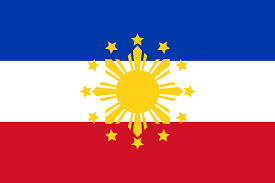This nation is in Vacation Mode for the next 169 turns. This nation cannot be attacked or traded with during that time.
| National Factbook |
| Flag: |

|
| Nation Name: |
Holy Philippine Empire |
| Leader Name: |
Brad I |
| Currency: |

Philippine Peso |
| National Animal: |

Philippine Eagle |
| History: |
The Holy Philippine Empire was officially declared in 2056 with the Declaration of Unity, uniting the ASEAN nations under a centralized absolute monarchy. Guided by Emperor Brad I, the empire rose to prominence through innovative governance, the revitalization of culture, and rapid technological advancements, achieving global influence after the Third World War. |
| Geography |
| Continent: |
Asia |
| Land Area: |
7,242.03 sq. km |
| Terrain: |
The empire spans diverse landscapes, including tropical rainforests, volcanic mountain ranges, coastal plains, and coral reefs, reflecting the unique geography of the ASEAN region. |
| Highest Peak: |
Mount Apo,
2,954 meters
|
| Lowest Valley: |
The Central Luzon Plain,
1 meters
|
| Climate: |
The empire experiences a tropical climate, with hot, humid summers and a distinct rainy season. Seasonal typhoons are common, particularly in the Pacific region. occasional winter seasons during December to late January (artificial winter) |
| People & Society |
| Population: |
425,683 people |
| Demonym: |
Filipino |
| Demonym Plural: |
Filipino's |
| Ethnic Groups: |
Austronesians - 85.0%
Neanderthal-descended hybrids - 5.0%
Sino-Malay - 10.0% |
| Languages: |
Filipino - 100.0%
English - 100.0%
Mandarin - 10.0% |
| Religions: |
Christianity (primarily Roman Catholicis - 85.0%
Islam - 10.0%
Buddhism - 5.0% |
| Health |
| Life Expectancy: |
78 years |
| Obesity: |
15% |
| Alcohol Users: |
60% |
| Tobacco Users: |
25% |
| Cannabis Users: |
5% |
| Hard Drug Users: |
0% |
| Economy |
| Description: |
The Holy Philippine Empire has a capitalist economy with strong socialist policies to ensure universal healthcare, education, and public welfare. It is a resource-rich nation, leveraging its geographic diversity and global influence for trade and industrial development. |
| Average Yearly Income: |
$56.91 |
| Gross Domestic Product (GDP): |
$341,027,767.00 |
| GDP per Capita: |
$801.13 |
| Gross National Income (GNI): |
$242,680,105.00 |
| Industries: |
Major industries include advanced technology and robotics, renewable energy production, aerospace engineering, tourism, agriculture, and marine industries. The exportation of luxury goods and cultural artifacts has further solidified the empire's position in the global economy. |
| Military |
| History: |
Military Forces
The Imperial Armed Forces were formally established during the Declaration of Unity in 2056, uniting the military capabilities of the ASEAN nations under a single command structure. However, the roots of the Imperial Army trace back to the early 21st century, when regional forces collaborated during the Third World War. The experience gained in this global conflict led to the creation of one of the most advanced and disciplined military institutions in history.
The Imperial Armed Forces consist of:
The Philippine Imperial Army: Specializing in ground operations, equipped with state-of-the-art armored vehicles, autonomous drones, and exoskeleton technology.
The Philippine Imperial Navy: Dominating the seas with aircraft carriers, nuclear submarines, and advanced naval strike groups, safeguarding the empire's vast coastlines and strategic trade routes.
The Philippine Imperial Airforce: Operating advanced stealth fighter jets, hypersonic aircraft, and a growing fleet of space-ready defense craft.
The Philippine Imperial Coast Guard: Ensuring the security of coastal territories, disaster response, and anti-piracy operations.
Each branch of the military integrates cutting-edge technology, artificial intelligence, and space-defense capabilities.
|
| Soldiers: |
0 |
| Tanks: |
0 |
| Aircraft: |
0 |
| Ships: |
0 |
| Missiles: |
0 |
| Nuclear Weapons: |
0 |
| Last Updated: 01/23/2025 07:18 am |













